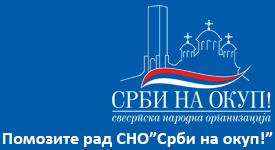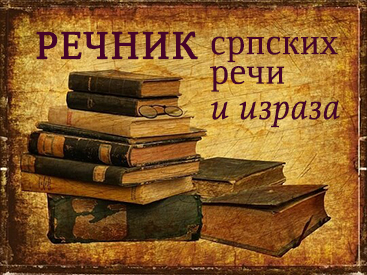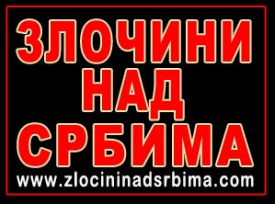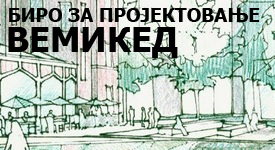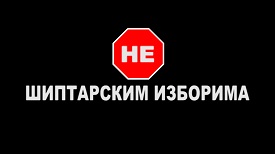Why Orthodox Churches are still used as pawns in political games
First, a disclaimer: today I am going to touch upon a subject which is intensely painful for me and which will get quite a lot of my readers angry at me. Frankly, I did everything I could, not to discuss this issue on the blog, because I know, out of my personal experience, that discussing this topic is mostly futile and typically gets a lot of hostile reactions. This is made even worse by the fact that to be able to discuss this issue requires a certain level of knowledge in various subject matters which most people have only a very superficial familiarity with (if that). Finally, this topic is often debated in a nasty and vindictive manner and I have no desire whatsoever to contribute to that. And yet, there comes a time when I cannot remain silent, especially when I am constantly asked what my position on this topic is. At the end of the day, I have to follow my conscience and this conscience tells me that now is the time to put down in writing that which I mostly have tried to keep to myself, primarily because I did not see the point in publicly discussing it.
By now most of you must have heard that Poroshenko and the Ukrainian Rada have made an official request to the Patriarch of Constantinople to grant the Ukrainian Orthodox Church its full “autocephaly” (i.e. independence from the Russian Orthodox Church of the Moscow Patriarchate). Right there, in the preceding sentence, there are a lot of assumptions which are invalid and a lot of terms which are not defined and are, therefore, ambiguous at best.
To really be able to understand what is really at stake here you would need, at a very minimum, to have a basic but solid understanding of the following topics:
- Orthodox ecclesiology (probably the hardest topic to get a grasp of)
- The history of Orthodoxy in the territory called “the Ukraine” today
- The history of the Russian Orthodox Church between the 16th and 19th century
- The history of the Russian Orthodox Church during the early 20th century
- A good understanding of what the Moscow Patriarchate today really is (its nature, status, role, how it functions, etc.) and what it’s historical and theological roots are
- A basic understanding of the history of the Orthodox Churches under Ottoman occupation
I am very sorry to say that I cannot offer even a short summary of these topics here simply because there is no way of shortly summarizing them. For those interested, I did touch upon these topics in the past, especially in this and in this article. I strongly recommend you read them to get at least a sense of what I am going to be touching upon below.
To say that this topic is very complex is an understatement. Sadly, very few Orthodox Christians nowadays have the kind of basic knowledge needed to develop an informed opinion about this. Not by their fault, by the way, but simply because the level of religious literacy (taken broadly) has been in free fall for many decades, including among the Orthodox people.
So what I want to begin with here are a number of “bullet point” observations which I want to share with you “as is”, without going into the kind of deeper analysis every single one of them would deserve. What I hope to achieve is just to give a sense of the issues involved and to convince you that things are nowhere nearly as simple and black and white as some would like them to be.
First a few historical bullet-points
- First, I want to immediately set aside any discussion of Orthodox ecclesiology. Besides, 99.9999% of those discussing this issue today do not really refer to Orthodox ecclesiological arguments anyway (even when the pretend to), so there is no point in arguing about this from this perspective. I will just say that a reasonable case can be made that the territory of what is today the Ukraine should be considered separately from the rest of Russia. Simply put, the history of Orthodoxy in southwestern Russia (roughly what we think of as the Ukraine today) and northeastern Russia (roughly what we think of as Russia today) between the 13th and 18th century have been dramatically different: the Orthodox people in these regions had to live, and sometimes survive, in very different circumstances, overcoming very different crises and, for a long while, they lived in dramatically different realities (primarily thanks to the Lithuanian and Polish occupation of western Russia and the systematic anti-Orthodox policies of the Vatican and its agents). Yes, Orthodoxy in the Ukraine and Russia have the same root, but then their paths took them along very different roads, so to speak.
- Second, the Russian Orthodox Church underwent a dramatic and bloody internal schism during the 17th century (the so-called “Old Rite” schism) which saw the state (not so much the Church!) violently crush the opposition. This left deep wounds inside the Russian society and these events deeply alienated the masses of the Russian people against their leaders.
- Third, the Russian Orthodox Church lost her independence and was gradually subordinated to the Russian state since, at least, the reforms of Czar Peter I (called “The Great” by westernizers) who reigned from 1682 to 1725. Furthermore, starting with Peter I, Russian ruling classes were gradually replaced with “imported” West European elites, which only further alienated the common Russian people.
- Fourth, much of the Ukraine was liberated from the Polish Latin yoke by Catherine II (also called “The Great” by westernizers) who reigned from 1762 to 1796. However, by liberating the Ukraine, Catherine also inherited a population which included a large number of westernized elites, both Orthodox and Latin, and a huge Jewish population.
- By the late 19th early 20th century the Russian elites were largely secularized and westernized while the traditional Orthodox ethos was severely disrupted inside the Russian society at large. Furthermore, there were very diverse movements inside the Russian Orthodox Church ranging from hesychastic monasticism (I think of Saint Theophan the Recluse) to rabid modernism (which resulted in the “living church” movement). This created severe internal tensions inside the Russian Orthodox Church.
- The Bolshevik Revolution resulted in massive and genocidal religious persecutions against all religions in Russia, especially against Orthodox Christians which the Bolsheviks saw as 1) class enemies, 2) crypto-monarchists, 3) anti-Semites, 4) subversives 5) reactionaries 6) supporters of Grand-Russian chauvinism.
-

Orthodox clergymen in the first Soviet concentration camp in the “Solovetsky Special Designation Camp” (late 1920s)
As a result of vicious and widespread religious persecutions, at least four distinct groups appeared among Russian Orthodox Christians: 1) those who fled abroad 2) those who openly opposed the new regime 3) those who went into hiding 4) those who fully embraced the new regime. The first group left Russia and eventually founded the so-called “Russian Orthodox Church Abroad”. The second group (often called the “Josephites” after their leader Met. Joseph of Petrograd) was completely exterminated. The third group (the so-called “Catacomb Church”) split into many small subgroups and survived until our days, albeit with great difficulties and in very small numbers. The fourth group formed the basis of what is known today as the “Moscow Patriarchate” which today represents the overwhelming majority of Orthodox Christians in Russia.
- During the Soviet era, the Moscow Patriarchate became the loyal instrument and supporter of the state in exchange for the exclusive control of all parishes, monasteries, cathedrals, seminaries, etc. The Department of External Relations of the Moscow Patriarchate was basically run by the KGB and while the rank and file faithful had no choice which Russian Orthodox parish to attend, the Soviet state was in full control of the Moscow Patriarchate. This is what the famous Russian singer Igor Talkov, later murdered, referred to when he sang in his famous song “Globe” “Show me such a country, Where the churches are boarded up, Where the priest hides under his cassock, KGB epaulettes” (Покажите мне такую страну, Где заколочены храмы, Где священник скрывает под рясой, КГБ-шный погон).
- In 1991, following the end of the Soviet era, the Moscow Patriarchate initially was challenged in its legitimacy by various groups of people, but with every passing year the Russian state under Eltsin and then Putin re-gained full control of the Moscow Patriarchate and a wave of repressions was unleashed against those small, but surprisingly numerous, Orthodox Christians groups who challenged the legitimacy of the Moscow Patriarchate.
- In 2007, the majority of the bishops of the Russian Orthodox Church Abroad, allured by a strong sense of religious revival in Russia and a completely secular type of patriotism, reunited with the Moscow Patriarchate thereby conferring upon it a degree of legitimacy it had never enjoyed in the past.
- In the Ukraine, officially independent since 1991, the situation remained far more fluid and a number of schisms occurred creating at least two versions of an “independent” Ukrainian Orthodox Church. The Latin Uniats also played a key role in the re-ignition of Ukrainian nationalism and even though most Orthodox bishops in the Ukraine remained under the Russian Orthodox Church of the Moscow Patriarchate, the pressure began to remove this “Moskal” jurisdiction and replace it by a “purely Ukrainian” one.
- The main problem with the so-called “Ukrainian Orthodox Church of the Kyivan Patriarchate” (a self-proclaimed and therefore completely illegitimate ecclesiastical body) is that it is a pure product of the Moscow Patriarchate. It’s founder, Metropolitan Filaret (read about him here), was even considered a likely candidate to become Patriarch of Russia, this is might seem outright bizarre, but this is true. It gets even more surreal – in 1990 the Moscow Patriarchate actually gave the Ukrainians a bizarre status of “autonomy” (but not quite independence) thus creating something called the “Ukrainian Orthodox Church of the Moscow Patriarchate”, not to be confused with the “Ukrainian Orthodox Church of the Kyivan Patriarchate” or, for that matter, with the “Ukrainian Autocephalous Orthodox Church” (all three are “sort of” official in the Ukraine).
- As for the Latins and their Uniats, they have played a key role both during Bandera’s years in WWII and then in the resurgence of Ukronazi nationalism since 1991. They are one of the key factions of the Ukronazi regime in power since the coup in 2014 (the Poles and the Latins have always attacked Russia every time they perceived her as weakened by some internal or external problem; this is really nothing new).
Next, the term “canonical” and its misuses
There is a term which you will hear used a lot by all sides in this, and other, disputes. This term is “canonical”. Originally, the word “canon” simply means “measure” or “rule”. The correct modern meaning of the word “canonical” should be, but is not, “in accordance with, or in harmony/compliance with, the canons”, i.e. in conformity with the praxis and rules agreed upon by the Church Fathers and which were proclaimed by local and ecumenical Church Councils. Alas, this is not AT ALL what the word “canonical” means nowadays. Nowadays, the world canonical is used as an equivalent/substitute for “official” or “officially recognized” or even “majority endorsed”. From a strictly Orthodox point of view, this is an absolutely absurd interpretation of the notion of canonical since there were MANY times in Church history when the secular rulers backed heretical bishops and when most bishops had fallen into heresy (the times of Saint Maximos the Confessor and the Monothelite heresy come to mind). This misunderstanding of the word “canonical” is a sad witness to the deep state of secularization which so many putatively “Orthodox” Churches have undergone. But it gets even worse. Since many, or even most, “official” Orthodox churches have some very serious problems with their legitimacy and/or with their compliance with Church canons and traditions, they came up with a new trick: they confer “canonicity” upon each other. That is, one illegitimate bishop or Church declares itself the “only canonical one” in region A; another does the same in region B, and then they recognize each other and together proclaim themselves as “the only canonical” bishops/Churches worldwide. Conversely, those who do not have the support of secular powers and who cannot use the local riot police to seize parishes or monasteries are therefore decreed as “uncanonical” and dismissed as “fringe extremists”. From a purely Patristic point of view, this is all totally nonsensical and if anything, sheds a great deal of doubt upon the putative “canonicity” of the self-proclaimed “canonical” bishops or Churches. Let me give you just one example:
The 3rd Canon of the 7th Ecumenical Council says:
Every appointment of a bishop, or of a presbyter, or of a deacon made by (civil) rulers shall remain void in accordance with the Canon which says: “If any bishop comes into possession of a church by employing secular rulers, let him be deposed from office, and let him be excommunicated. And all those who communicate with him too.”
All the most authoritative interpreters of canons (Aristenos, Balsamon, Zonaras) agree that this canon categorically forbids the appointment of bishops by the interference of secular powers. In fact, the Canon quoted in this Canon is the 31st Apostolic Canon and says exactly the same thing:
If any bishop makes use of the rulers of this world, and by their means obtains to be a bishop of a church, let him be deprived and suspended, and all that communicate with him.
Pretty clear, no? This is what the Apostles themselves decreed! And yet it is undeniable that in many Orthodox countries nowadays (and in the past) bishops have their bishopric primarily, and often solely, by the intervention of secular state rulers. Christ said “my kingdom is not of this world” so how can the support of the (often secular and even atheistic) powers that be confer legitimacy aka “canonicity” upon modern bishops?! In reality, this practice itself is completely uncanonical!
The sad reality is that none of the so-called “Orthodox Churches” involved in the current dispute in the Ukraine have a “canonical leg” to stand on. While from a political or secular point of view, some might appear to be preferable to others, from a strictly canonical and Christian (Patristic) point of view, they are all illegitimate, to begin with.
What the various Ukrainian nationalistic Churches are doing now to the “Ukrainian Orthodox Church of the Moscow Patriarchate” is absolutely no different at all from what the Moscow Patriarchate did to the Josephites or the Catacomb Church and what the Moscow Patriarchate is still doing nowadays to the various small groups who refuse to recognize the Moscow Patriarchate and who often refer to themselves as “True Orthodox” (for the latest example of such persecution those of you who read Russian can see these articles). During the Soviet era, those belonging to such “True Orthodox” groups were simply jailed. During the 1990s the Russian riot police OMON was sent many times to seize churches, monasteries and other buildings run by Russian “True” Orthodox Christians whose only “sin” was to refuse to recognize the legitimacy of the Moscow Patriarchate. Yet the victims of those persecutions are now called “uncanonical” whereas their persecutors are “canonical”. Go figure…
Now back to politics
The sad truth is this: both in the Ukraine and in Russia the official (aka “canonical”) Orthodox Church is but an instrument in a larger toolkit of state power. In both countries the “official” Church embodies primarily national, not spiritual or theological, categories and while in Russia the current ruler is one of the most capable ones in the history of Russia (which cannot be said about the Uberloser Poroshenko), this was also the case under Eltsin (one of the worst people to ever rule over Russia) and all his Communist predecessors and this will probably remain the case for the foreseeable future regardless of who sits in the Kremlin.
I submit that when the Church is subservient to the state this is by definition extremely bad, even if the ruler of the day just so happens to be a very good one. But never mind my opinion. The Apostles and the Church Fathers all unanimously held that the Church cannot be subjected to the secular powers. At best, when the secular power is truly Orthodox, they can function together “in agreement” (symphony) one protecting and one guiding the other. But the Church should always remain the conscience of the secular leader, not his or her butler.
In my article entitled “A negative view of Christianity and religion in general” I wrote something which I would like to repeat here because I believe it to be absolutely crucial:
Think of it – does it not strike you as paradoxical that Christ said “If the world hates you, ye know that it hated me before it hated you. If ye were of the world, the world would love his own: but because ye are not of the world, but I have chosen you out of the world, therefore the world hateth you” (John 15:18-19) and yet the very same corporate media who serve the AngloZionist Empire and its planned New World Order also would give putatively “Christian” leaders the kind of coverage which normally goes to Rock stars?
When was the last time you ever heard one of those “superstar religious leaders” dare to denounce the modern rulers of our world as the genocidal mass murderers they are, or even simply as hypocrites? But no, they meet with them and they hug, they smile, they kiss – each time a big love fest. Long gone is the time when Christian leaders had the courage to openly criticize an Empress (like Saint John Chrysostom) or dare to speak to a modern leader like Saint Philip II, Metropolitan of Moscow, who refused to bless the Czar Ivan the Terrible after a church service and instead publicly castigated him in the following words:
I don’t recognize the Orthodox Czar anymore. I don’t recognize him in his rule, O Lord! We are here bringing a sacrifice to God, while behind the alter the blood of innocent Christians is shed. Since the sun shines in the sky it has never been seen or heard that a pious Czar would outrage his own kingdom in such a way! Even in the most impious and pagan kingdoms there is the rule of law and the Truth, and there is mercy towards the people, but not in Russia! You are high on your throne, but there is an Almighty Judge above you. How will you face his judgment? Covered in the blood of the innocent, made deaf by the sound of their tortured screams? Even the stones under your feet are demanding vengeance O Lord! I am telling you as a pastor of souls – fear the One God!
Can you imagine an Orthodox Patriarch or a Latin Pope addressing, say, Obama with such words? And while Saint Philip was eventually tortured and murdered for his courage, modern Patriarchs and Popes incur no such risks. And yet they remain silent: they see nothing, hear nothing and, above all, they say nothing.
This is not a uniquely Russian or Orthodox problem, by the way. My Muslim friends tell me that they have exactly the same problems with many of their religious leaders in Russia. And not only in Russia, we also see the same abject subservience of so many supposed “Islamic” scholars to the House of Saud. And I won’t even mention western Christian denominations here, who are all integral to the Empire on too many levels to count.
In this context, what are the Ukronazis actually really up to?
In reality, they are doing two very basic and potentially dangerous things:
- They are provoking Russia by any and all available means (see the recent seizure of a Russian fishing vessel in the Sea of Azov)
- They are demonstrating their utility (russophobic credentials) to their AngloZionist patrons
These, along with many other signs, are indicators that a war is in the making and that sooner rather than later the Ukronazis will attack the Donbass and try to force the Russian Federation to openly intervene militarily to prevent the Ukronazis from doing to the Novorussians what the Croats and Albanians did to the Serbs in the Serbian Krajina and in Kosovo (or what Saakashvili attempted to do with South Ossetia). The current campaign to declare the “Ukrainian Orthodox Church of the Moscow Patriarchate” as an “enemy organization” of the “occupier” is just one more way to create tensions and prepare the public opinion for the inevitable violent climax. The fact that none of the Churches involved in this conflict have any true (canonical) legitimacy won’t make this less tragic and, and probably violent, for the people involved. As usual, the common people will pay the price while the fat cats on all sides will do just fine, thank you.
This is really a sad and tragic situation. The overwhelming majority of the people on both sides are both sincere and mislead, and their best feelings are used in what is a very dangerous political game by people who themselves will never have to suffer for their faith (or lack thereof).
Debunking the “Orthodox Pope” myth
Here I need to begin by debunking a misconception: there is no such thing as an “Orthodox Pope” or some “Eastern Pope”. The entire concept of the Papacy is a Frankish notion forcefully (and brutally) imposed upon the Western Romans by their Frankish occupiers. However, the fact that no such thing exists does not prevent some Orthodox bishops from dreaming about it (pride is a core component of our fallen human nature). I will try to clarify this issue in the simplest possible terms.
All bishops are successors to the 12 Apostles and although some of them have left a deeper mark in the history of the Church than others, there was no hierarchy among them. The famous “thou art Peter and upon this rock I will build my Church” (Matthew 16:18) refers not to Peter himself, but to his confession “Thou art the Christ, the Son of the living God” just spoken by Peter in the previous verse. That was the Patristic consensus (consensus patrum) interpretation during the first 1000 years of Christianity (yes, even in the West). If anything, it was Saint James which was the first bishop of Jerusalem, and Saint Paul who, while not even part of the 12 Apostles, was the main interpreter of Christ’s teachings. The Apostles, who were assisted in their works by presbyters/priests, then further consecrated more bishops. Some of them had their see in regular towns, others in major important cities and capitals. The titles of “Archbishop” or “Metropolitan” or “Patriarch” simply refer to bishops whose see is in a major capital city (“Pope”, which just means “Father”, was the one used for the Patriarch of Rome). These are purely *administrative* titles and do not indicate any qualitative differences. Needless to say, the bishop of the Roman Empire’s capital was considered as holding the most important position as he spoke to the Emperor on behalf of the Christian people. When in the 5th century the city of Rome was sacked and eventually fell the Western Roman Empire collapsed. But in the east, the Roman civilization survived by a full 1000 years. When in the 11th century the Pope in Rome decided that he was a super-bishop (1054) which had the authority to impose his absolute rule over the entire Christian world (see the infamous 1075 Dictatus Papae) the rest of the Christian world categorically rejected such an anti-Patristic innovation and, since the first, original Rome (the city) had first fallen to the Franks and then lapsed into apostasy, the Patriarch of Constantinople found himself to be the bishop of the eastern (and only surviving) capital of the Roman Empire: Constantinople. However, and this is crucial, unlike the western Pope who claimed to be the “Vicar of Christ” and some super-bishop (a pontifex maximus), the Patriarch of Constantinople did not make any such claims of primacy just because he happened to be the bishop in the imperial capital (nowadays his official title is a modest “His Most Divine All-Holiness the Archbishop of Constantinople, New Rome and Ecumenical Patriarch” – more about that below). Then, when in the 15th century, Constantinople was invaded by the Ottomans, the Roman empire truly came to an end. So, at that moment in time, which should have been considered the most important city in the Christian world? Some in Russia felt that Moscow had become the “Third Rome” (especially after the False Union of Florencein 1439), an ecclesiologically speaking controversial proposition, but which was greatly strengthened over time when Russia became the biggest, strongest, richest Orthodox country on the planet (most others were under Ottoman occupation) and the Russian population (and military might) was much larger than the one of any other Orthodox country.
You see where this is heading, right? The Patriarch of Constantinople used to be the “first among equals” for 1000 years, but now the Patriarch of Moscow was threatening this status, especially since the former was truly ruling over just one neighborhood of Istanbul (the Phanar). Without going into further details (like the attempts of the Patriarch of Constantinople to present himself as the head of all the various Orthodox diasporas worldwide), let’s just say that there is not much love lost between the Patriarchate of Constantinople and the Moscow Patriarchate. Both sides try to keep things civil, but there are cyclical tensions and regular outright disputes.
The reality is that even if we accept the notion that Moscow was the Third Rome, that status ended for Moscow in 1917, just as it ended for the Second Rome in 1453 and for the First Rome in 476. In fact, no Patriarch, Archbishop, Metropolitan or Bishop can today lay a claim to any “primacy of honor”, especially when most of them have their reputation soiled by their participation in the so-called Ecumenical Movement, their abandonment of the Church Calendar, their subservience to the secular powers, etc. In truth, the Orthodox world is undergoing a deep crisis on many levels and there is something profoundly indecent about these fights for some primacy of honor at a time when the majority of the population of historically Orthodox countries is only very superficially religious, if that. If there is no such thing as an “Orthodox Pope” there sure are a lot of Orthodox bishops acting as if they wanted to become one (hence the “historical” meetings, with hugs and all, between the Latin Pope and the Orthodox Patriarchs and wannabe-Popes).
Introducing another toxic phenomenon: (ethno-)phyletism
Things are made even worse by the outright nasty streak of nationalism infecting many Orthodox Churches.
The sad reality is that we live in a post-Christian world. This is also true for nominally “Orthodox” countries such as Russia, Greece or Serbia where truly religious people constitute a minority and where being “Orthodox” is primarily a national, patriotic category (at least for most people). Some even call themselves “culturally Orthodox”. These people ought not to be dismissed by the way. They are participants in what is undeniably a spiritual revival and when they conflate national/ethnic categories with spiritual ones it is often because their nation or ethnicity has been persecuted, often viciously. But when spiritual and theological categories and language are used to cover up political and secular goals, this is the time to speak up and denounce this farce for what it is: a gross misrepresentation of what true (Patristic) Christianity truly stands for and embodies.
Christian ecclesiology rejects the notion that each ethnic group ought to have its own, separate Church. This idea, that each ethnic group ought to have its own separate Church, is called “phyletism” or, sometimes, “ethno-phyletism” and is an already condemned heresy. Yes, since the Apostolic times there have been local Churches, but all these Churches were administratively autonomous for practical purposes. But in theological terms, there can be only One Church and the local Churches are simply autonomously self-organized parts of the single One Church. As for ethnicity and nationality, these are modern categories which are not even part of the Patristic theological language. And while there is nothing wrong with the French praying in French, or the Japanese in Japanese, or the Congolese in Lingala, and they all should have their own priest and bishops, and while liturgical rites have naturally and organically evolved and incorporated elements of various local cultures, the idea of the primacy of an ethnic identity over the unity of all Orthodox Christians is fundamentally wrong. This is why the Scripture says “Here there is no Greek or Jew, circumcised or uncircumcised, barbarian, Scythian, slave, or free, but Christ is all and is in all” (Col 3:11) and “There is neither Jew nor Greek, there is neither bond nor free, there is neither male nor female: for you are all one in Christ Jesus” (Gal 3:28) and “One Lord, one faith, one baptism” (Eph 4:5) and “For as many of you as have been baptized into Christ have put on Christ” (Gal 3:7). In theological terms, all Christians, regardless of their ethnic origin and culture, form one single “Body” with many “members” all united by the same faith and their participation in the life of the Church, which is the Theandric Body of Christ.
Ideally, there should be one bishop in each region/province and all of these bishops united in local councils which themselves should be united into only one Church church of our entire planet. In the real world, with all its wars, millions of displaced refugees, vicious anti-religious repressions and members of many different cultures living in one country (as in, for example, the USA) this ideal has been very difficult to achieve. The individual ambitions of some less than spiritually-inclined bishops have just made things worse.
Summary: a very difficult situation but also reasons to keep hoping
The reality is that in most Orthodox countries, including Russia and the Ukraine, the majority of the people are “Orthodox” primarily in a cultural and even national sense. Centuries of subservience to the secular state have made many local Orthodox churches tools in the hands of politicians. There is an ugly competition for power and influence among many of the local Orthodox Churches, and especially between Constantinople and Moscow. Most putatively “Orthodox” Churches and jurisdictions have been deeply infected by modernism, secularism, national (identity) politics and are now actors in political struggles in many countries. The words “my kingdom is not of this world” (John 18:36) have been forgotten by many, if not most, Orthodox bishops.
That is not to say that there is not a real spiritual revival in countries like Russia. There is. But it is also true that this revival often takes place in spite of the attitudes of “official” religious leaders (that goes both for Orthodoxy and for Islam). Still, bad as this situation is, it should be assessed in the larger historical context: in one way or another, the Church has always been undergoing crises and persecutions during almost every year since Her foundation. Many of those crises took centuries to be resolved. So the fact that so much looks bleak today should not discourage anybody. There is really nothing new under the sun.
Still, the very real spiritual revival in Russia (and in other Orthodox countries) is still in its early stages and while things are generally heading in the right direction, there is a lot of “mental ground” to be reconquered before most people return to the spiritual roots (or phronema) of the true, original, Christianity. Eventually, the Orthodox Churches will have to regain their full autonomy from the secular powers, not just in grand statements and words, but in reality. This is a long road, it will probably take many decades, if not more, to heal from the devastating consequences of the terrible events (and ideological dead-ends) of the 20th century. But as Russians (and others) rediscover the true history of their countries, I believe that this is bound to happen.
Conclusion
I wish I could have presented a simple, optimistic picture here, with on one side, the totally evil Ukrainians and on the other, the noble and heroic Russians. Alas, the reality is much more complex and, frankly, much uglier. The fight over which side gets to declare itself THE “Ukrainian Orthodox Church” is an ugly one and while, in this case, it is pretty self-evidently obvious who the aggressor is (those supported by the Ukronazi nationalists), any serious analysis of the historical context for this dispute will inevitably yield a much more complex picture. It is my personal conviction that as long as Orthodox Churches are controlled by bishops who are much more concerned with pleasing Caesar (Matthew 22:21) than they are with pleasing God, political and nationalist consideration will continue to pollute the spiritual realm. I hope that the example of Saint Philip II, Metropolitan of Moscow mentioned above, and the millions of Orthodox New Martyrs who died in the 20th century, will inspire a new generation of Orthodox hierarchs who will eventually replace the current Soviet-era faithful servants of the state (regardless of who is in power) and who will return to the true faith “which the Lord gave, was preached by the Apostles, and was preserved by the Fathers. On this was the Church founded; and if anyone departs from this, he neither is nor any longer ought to be called a Christian” (St. Athanasius).
The Saker
Извор: The Saker
